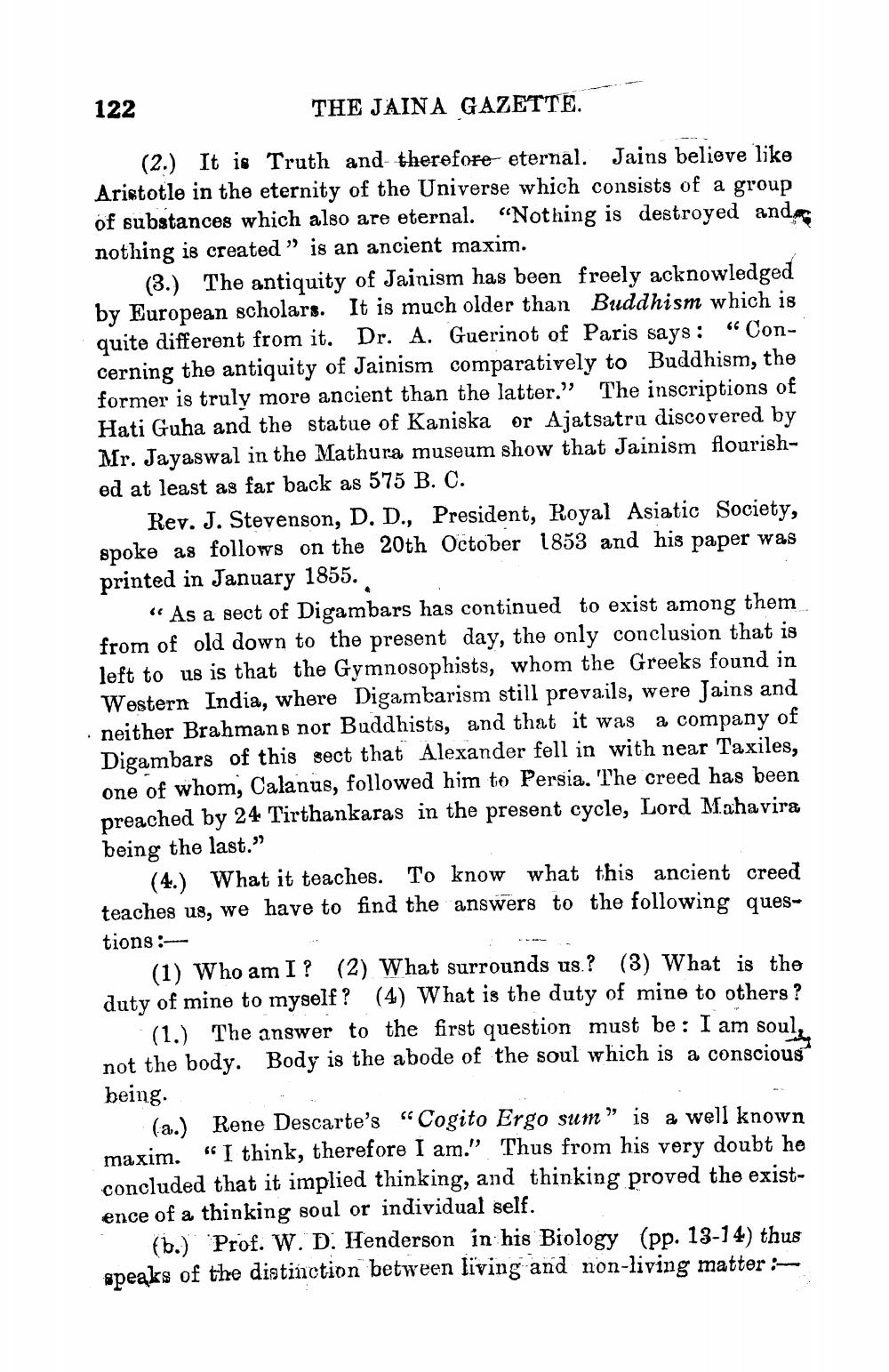________________
122
THE JAINA GAZETTE.
(2.) It is Truth and therefore eternal. Jains believe like Aristotle in the eternity of the Universe which consists of a group of substances which also are eternal. “Nothing is destroyed and nothing is created” is an ancient maxim.
(3.) The antiquity of Jainism has been freely acknowledged by European scholars. It is much older than Buddhism which is quite different from it. Dr. A. Guerinot of Paris says: “Concerning the antiquity of Jainism comparatively to Buddhism, the former is truly more ancient than the latter.” The inscriptions of Hati Guha and the statue of Kaniska or Ajatsatru discovered by Mr. Jayaswal in the Mathura museum show that Jainism flourished at least as far back as 575 B. C.
Rev. J. Stevenson, D. D., President, Royal Asiatic Society, spoke as follows on the 20th October 1853 and his paper was printed in January 1855.
“ As a sect of Digambars has continued to exist among them from of old down to the present day, the only conclusion that is left to us is that the Gymnosophists, whom the Greeks found in Western India, where Digambarism still prevails, were Jains and · neither Brahmans nor Buddhists, and that it was a company of
Digambars of this sect that Alexander fell in with near Taxiles, one of whom, Calanus, followed him to Persia. The creed has been preached by 24 Tirthankaras in the present cycle, Lord Mahavira being the last.”
(4.) What it teaches. To know what this ancient creed teaches us, we have to find the answers to the following questions :
(1) Who am I? (2) What surrounds us.? (3) What is the duty of mine to myself? (4) What is the duty of mine to others ?
(1.) The answer to the first question must be: I am soul, not the body. Body is the abode of the soul which is a conscious being.
(a.) Rene Descarte's “Cogito Ergo sum" is a well known maxim. “I think, therefore I am.” Thus from his very doubt he concluded that it implied thinking, and thinking proved the existence of a thinking soul or individual self.
(b.) Prof. W. D. Henderson in his Biology (pp. 13-14) thus speaks of the distinction between living and non-living matter :




